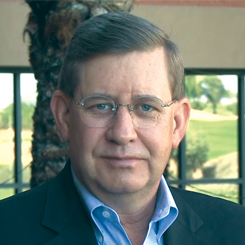Industry Updates
A New Agenda
The CEO of the new American Property Casualty Insurance Association lays out the issues the group will focus on in 2019.
- Renée Kiriluk-Hill
- February 2019
-






There is a lot of work to be done this year. At the state level, we expect we will be very focused on risk-based pricing and preserving tools that enable property and casualty to accurately underwrite.
David Sampson
American Property Casualty Insurance Association
The insurance industry needs a regulatory environment where it can move at the speed of innovation while maintaining solvency and appropriate market conduct, according to American Property Casualty Insurance Association President and Chief Executive Officer David Sampson.
The new association, formed by the Jan. 1 merger of American Insurance Association and Property Casualty Insurers Association of America, is making industry-related technology changes a “very high priority,” Sampson said. “There is a lot of work to be done this year. At the state level, we expect we will be very focused on risk-based pricing and preserving tools that enable property and casualty to accurately underwrite.”
At the federal level, he said there is a lot of very important work ahead on reauthorization of the Terrorism Risk Insurance Act.
The National Flood Insurance Program was extended until May 31 and the Federal Emergency Management Agency is keeping it operational through the partial government shutdown caused by a budget impasse. A divided Congress “has got a lot on its plate,” said Sampson. “We're pleased there is continuity to the program for the next several months.”
There is an increased appetite to write private flood, and new models and underwriting tools make that much more feasible, he said. “Not that there won't be a role for the NFIP, it's a 'both,' not an 'either/or' issue.”
The federal budget impasse postponed a meeting scheduled with Secretary of Commerce Wilbur Ross to discuss clear evidence that tariff increases are impacting automobile repair costs,Sampson said.
The APCI represents 60% of the U.S. property/casualty insurance marketplace with a $55 million annual budget, said Sampson—a large jump from either of the predecessor organizations. It has 160 employees, including 19 government relations professionals, and retains 60 lobbying firms in various states.
“We triage the states in terms of allocation of resources and advocacy priorities,” said Sampson. Florida is in the top tier as insurers struggle to contain assignment of benefit problems that have driven water claim and litigation costs higher. California's importance has been magnified by multiple destructive wildfires, he said.
Catastrophic events in 2017—prior to the Camp Fire, which started Nov. 7 and became the most-destructive fire in state history—sparked nearly two dozen industry-related bills in California last year. Sampson, PCI president and CEO prior to the merger with the AIA, said PCI had worked with California's insurance commissioner and legislators to “first to do no harm,” in part by recounting events in Florida after a succession of hurricanes in 2004-2005.
Post-hurricane regulatory actions greatly disrupted the private insurance market over the following decade and effects are still evident, said Sampson. In California, he suggested, “Let's look at focusing on targeting issues and problems without” impacting the overall insurance market.
“End-of-year legislation by and large was the result of a collaborative process between consumer groups as well as the industry,” said Sampson, pointing to the importance of continued engagement.
Among the measures taking effect in California on Jan. 1 was Senate Bill 894, which extends the insurance policy renewals for homeowners with a total loss from one to two renewals, or 24 months. Before joining PCI, Sampson served in President George W. Bush's administration, including a post as Deputy Secretary of the U.S. Department of Commerce. He also oversaw an intergovernmental agency on climate change.
“It has been an area I've had great interest in for well over a decade,” he said, noting it will receive increased attention from the property/casualty industry as global climate patterns impact losses.
“The key goal here is to mitigate against severe weather patterns and really work with communities on resilience.”